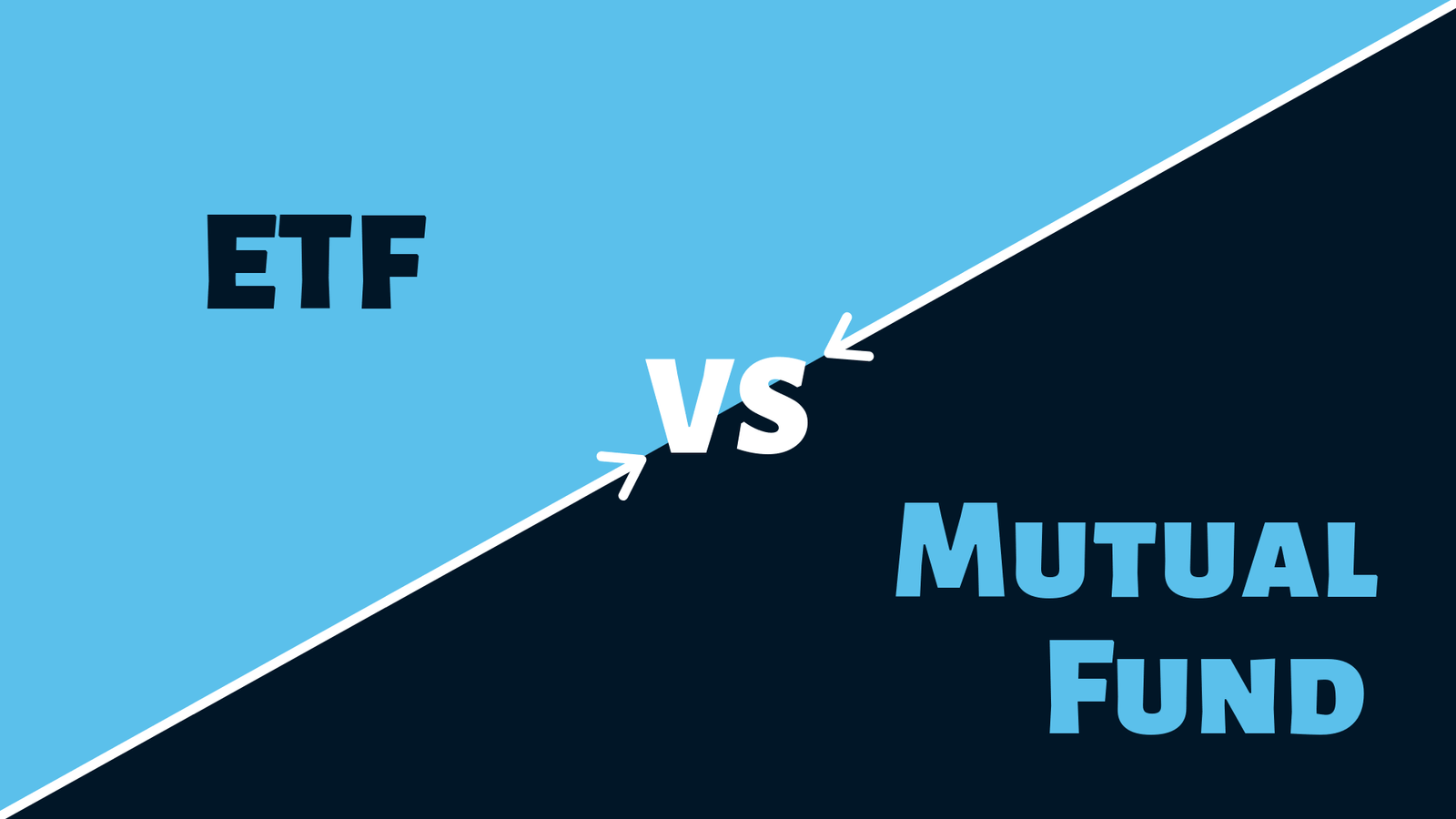In 2023, the global assets in exchange-traded products surpassed $10 trillion for the first time in history, representing a staggering 400% growth over the past decade. This explosive expansion highlights why understanding these investment vehicles has become essential for anyone looking to build wealth.
When exploring the world of investing, two popular options consistently stand out in the financial landscape. Mutual Funds and ETFs serve as gateways for everyday people to access diversified portfolios without needing massive capital or specialized knowledge.
Both these investment vehicles pool money from multiple participants to purchase a variety of securities, creating instant diversification that would be difficult for individual investors to achieve on their own. While they share this fundamental concept, they operate quite differently in terms of trading, management, and cost structure.
Recent trends in the industry are reshaping how these products work. According to financial experts at a Funds Europe roundtable, emerging patterns in the American market are likely to influence European investment options over the coming decade, particular in the active ETF space.
For newcomers and seasoned investors alike, choosing between these investment types requires understanding their unique characteristics and how they might align with specific financial goals. The right choice depends on your investment timeline, tax considerations, and preferred trading style.
Key Takeaways
- Global ETF assets recently crossed the $10 trillion threshold, showing remarkable industry growth
- Both investment vehicles offer diversification through pooled resources from multiple investors
- These options provide access to professional portfolio management for everyday investors
- Trading mechanics and fee structures represent key differences between the two choices
- American market trends in active management are influencing global investment product development
- Your personal financial goals should guide which option better suits your needs
Understanding Mutual Funds
In the realm of investment, mutual funds stand out as formidable instruments for wealth enhancement, enabling everyday investors to tap into the expertise of professional managers. These entities have revolutionized wealth accumulation, rendering sophisticated investment strategies accessible to those lacking extensive market acumen or substantial capital.
A mutual fund aggregates capital from numerous investors to acquire a diverse portfolio of securities. This collective investment strategy instantaneously diversifies, even for those with modest capital, obviating the need for individual security selection. Investors acquire shares in the fund, gaining exposure to its entire holdings.
The operational dynamics of mutual funds diverge markedly from other investment vehicles. Each fund calculates its Net Asset Value (NAV) daily, dividing the total value of securities by outstanding shares. This NAV serves as the benchmark for buying or selling shares.
Fund managers are instrumental in the mutual fund ecosystem. They conduct market research, analyze investment opportunities, and execute transactions aligned with the fund’s objectives. Their expertise is a primary advantage of mutual fund investing, catering to those who lack the time or knowledge for self-management.
Investors purchasing mutual fund shares engage directly with the fund company, unlike trading stocks or ETFs. This direct interaction offers a distinct investment experience.
| Feature | Open-End Funds | Closed-End Funds | Impact on Investors |
|---|---|---|---|
| Share Creation | Unlimited; creates new shares as needed | Fixed number of shares | Affects liquidity and price stability |
| Trading Mechanism | Directly with fund company | On exchanges like stocks | Influences how quickly you can buy/sell |
| Pricing | At NAV (end of day) | Market price (may differ from NAV) | Determines actual investment value |
| Prevalence | Most common type | Less common | Affects availability of investment options |
The advantages of mutual fund investing extend beyond professional management. Investors benefit from immediate diversification, which mitigates risk by spreading investments across multiple securities. This diversified approach is invaluable for those with limited capital, enabling broad market exposure.
Mutual funds also leverage economies of scale. By pooling resources, funds negotiate lower transaction costs and access investments unavailable to individual investors. This collective power translates into cost savings and enhanced investment opportunities.
Liquidity is another significant benefit. Most mutual funds allow investors to buy or sell shares daily, ensuring ready access to funds when needed. This flexibility makes mutual funds suitable for various financial goals and time horizons.
The variety of fund types available enables investors to align their investments with specific objectives. Whether seeking growth, income, or capital preservation, there’s a mutual fund designed to meet those needs. This versatility has cemented mutual funds as a cornerstone of wealth management strategies for both individual and institutional investors.
The mutual fund marketplace offers extensive product choices across various market segments. As industry expert Evans noted, “I did a small-cap US search… and found over 400. For large-cap, the number would be much higher.” This abundance of options provides investors with unprecedented choice but can also create decision paralysis without proper guidance.
For those crafting a long-term investment strategy, mutual funds offer a structured approach to wealth accumulation. Their professional management, diversification benefits, and variety of investment objectives make them suitable for investors at all stages of their financial journey, from beginners to those managing substantial portfolios.
An Overview of ETFs
Exchange-Traded Funds, commonly referred to as ETFs, have become integral to contemporary investment portfolios. Their unique structure and benefits have solidified their position. These investment vehicles combine the diversification benefits of mutual funds with the trading flexibility of individual stocks. Initially developed for institutional investors, ETFs have gained immense popularity among individual investors seeking efficient market exposure.
ETFs are investment funds that trade on stock exchanges throughout the day, akin to individual stocks. Unlike mutual funds, which price once daily, ETF shares can be bought and sold at market prices that may fluctuate throughout trading hours. Most ETFs are designed to track the performance of specific market index funds, such as the S&P 500 or Nasdaq Composite, making them excellent vehicles for passive investing.
The operational structure of ETFs differs significantly from mutual funds. ETFs utilize a unique creation and redemption process involving authorized participants (typically large financial institutions). These participants create new ETF shares by depositing a portfolio of securities with the fund and can redeem shares by exchanging them for the underlying securities.
This creation/redemption mechanism helps keep an ETF’s market price closely aligned with its net asset value (NAV). When discrepancies arise between the ETF’s market price and its underlying value, authorized participants can exploit the difference for profit, which effectively eliminates the gap. This process creates a natural arbitrage that helps maintain pricing efficiency.
ETFs offer several compelling advantages for investors. First, they typically feature lower expense ratios compared to similar mutual funds, with some passive investing ETFs charging annual fees below 0.1%. This cost efficiency can significantly impact long-term returns.
The trading flexibility of ETFs represents another key benefit. Investors can buy or sell shares throughout the trading day at current market prices, use limit orders, sell short, or even purchase on margin. This contrasts with mutual funds, which only trade once daily at the closing NAV.
ETFs also provide potentially tax advantages through their in-kind creation/redemption process. This structure generally results in fewer capital gains distributions compared to mutual funds, making ETFs potentially more tax-efficient for many investors.
Transparency is another hallmark of ETFs. Most disclose their complete holdings daily, allowing investors to know exactly what they own. This transparency contrasts with mutual funds, which typically only report holdings quarterly with a significant delay.
The ETF marketplace has expanded dramatically beyond simple market index funds. Today’s investors can access virtually every asset class, sector, and investment strategy through ETFs. Options range from broad market exposure to targeted investments in specific industries, geographic regions, or alternative assets.
As noted by industry experts, “The convenience and transparency of the ETF wrapper have universal appeal.” This universal appeal explains why ETFs have made significant inroads into virtually every distribution channel, from self-directed retail investors to sophisticated institutional portfolios.
While many ETFs follow passive investing approaches by tracking indexes, the category now includes actively managed options where portfolio managers make discretionary investment decisions. This evolution has further expanded ETF utility across different investment philosophies and objectives.
Key Differences Between Mutual Funds and ETFs

Mutual funds and ETFs embody distinct paradigms within the realm of pooled investments, each with inherent characteristics that necessitate a nuanced comprehension by astute investors. While both entities facilitate diversification, their structural nuances profoundly influence investment outcomes, tax liabilities, and overall portfolio strategies.
Pricing Mechanisms
The pricing mechanisms of these investment vehicles represent a fundamental divergence. Mutual funds are priced once daily, post-market close, with the price reflecting the Net Asset Value (NAV). This NAV is calculated from the closing prices of all securities within the fund.
Conversely, ETFs trade continuously, akin to individual stocks, with prices fluctuating in real-time based on market dynamics. This continuous pricing offers greater transparency and flexibility, catering to investors desiring precise price execution.
ETFs may occasionally trade at premiums or discounts to their NAV. A creation/redemption process involving authorized participants ensures that ETF market prices remain closely aligned with the value of their underlying assets. This mechanism underpins the efficiency of ETFs as an investment vehicle.
Management Styles
Mutual funds predominantly adopt an active management approach, where portfolio managers strive to outperform benchmark indexes through targeted investment decisions. These managers engage in thorough research, market trend analysis, and active trading based on their forecasts.
ETFs, by contrast, predominantly follow a passive investment strategy, aiming to mirror the performance of a specific market benchmark. This passive methodology typically results in lower turnover and management costs, contributing to a low expense ratio that benefits long-term investors.
The landscape is evolving, with actively managed ETFs gaining traction. These hybrid investments combine the trading flexibility of ETFs with active management strategies, broadening the investment options available to investors.
Tax Efficiency
ETFs generally exhibit superior tax efficiency compared to mutual funds, making them more advantageous for taxable accounts. This superiority stems from their unique structure and redemption processes.
When mutual fund investors redeem shares, the fund manager often must sell securities to raise cash, triggering capital gains that are distributed to all shareholders. This can create tax liabilities for investors, even those who did not sell their shares.
ETFs, on the other hand, utilize an “in-kind” creation and redemption process that minimizes the need for selling securities. This process typically does not result in capital gains distributions, potentially reducing the tax burden for long-term holders.
Cost Considerations
Cost differences between these investment vehicles can significantly impact your returns over time. ETFs generally feature lower expense ratios than comparable mutual funds, with a notable advantage when compared to actively managed mutual funds.
Yet, the total cost equation is more complex. Investing in ETFs involves considering trading costs such as brokerage commissions (though many brokers now offer commission-free ETF trading) and bid-ask spreads. These represent the difference between the highest price a buyer is willing to pay and the lowest price a seller will accept.
For long-term investors making infrequent trades, ETFs’ low expense ratios often translate to significant cost savings. Investors making frequent small investments might find certain mutual funds more cost-effective, provided they have access to no-load, no-transaction-fee options.
| Feature | Mutual Funds | ETFs | Investor Implication |
|---|---|---|---|
| Trading | Once daily at NAV | Continuous trading during market hours | ETFs offer more flexibility for timing trades |
| Management | Often actively managed | Traditionally passive, index-tracking | Management style affects strategy and costs |
| Tax Efficiency | May distribute capital gains regularly | Typically fewer capital gains distributions | ETFs generally more tax-efficient for taxable accounts |
| Expense Ratios | Generally higher | Typically lower | Lower costs can significantly improve long-term returns |
| Minimum Investment | Often $1,000 or more | Price of a single share | ETFs may be more accessible for beginning investors |
Grasping these key differences empowers investors to select the most suitable investment options for their financial objectives, time horizon, and tax circumstances. Whether the real-time trading of ETFs, the possibility of outperformance with actively managed mutual funds, or the tax efficiency considerations are most pertinent will hinge on the investor’s specific strategy.
Types of Mutual Funds
The mutual fund universe is segmented into several major categories, serving as foundational elements for a diversified portfolio. Each category plays a distinct role in asset allocation, providing investors with varied risk-return profiles to align with their financial objectives and risk tolerance.
Understanding these categories is essential for investors to make informed decisions when crafting their investment strategy. Let’s explore the primary types of mutual funds available in today’s market.
Equity Mutual Funds
Equity mutual funds predominantly invest in stocks, representing a popular category for long-term growth. These funds offer exposure to company ownership and the possibility of capital appreciation.
Equity funds are categorized based on market capitalization:
- Large-cap funds – Invest in established companies with market capitalizations typically exceeding $10 billion
- Mid-cap funds – Focus on companies valued between $2 billion and $10 billion
- Small-cap funds – Target smaller companies with market caps under $2 billion, providing higher growth with increased volatility
Equity funds also differ by investment approach:
- Growth funds – Seek companies with above-average growth prospects
- Value funds – Identify undervalued companies trading below their intrinsic worth
- Blend funds – Combine both growth and value strategies
For geographic diversification, investors can choose:
- International funds – Invest in developed markets outside the investor’s home country
- Emerging market funds – Focus on developing economies with higher growth and risk
- Sector funds – Concentrate on specific industries like technology, healthcare, or energy
Bond Mutual Funds
Bond funds invest in fixed-income securities, aiming to provide steady income with lower volatility than equity funds. These funds are critical in balancing a diversified portfolio, ideal for investors seeking income or nearing retirement.
The main categories of bond funds include:
- Government bond funds – Invest in securities issued by federal governments, considered among the safest investments
- Municipal bond funds – Hold bonds issued by state and local governments, often providing tax advantages
- Corporate bond funds – Invest in debt issued by corporations, providing higher yields with increased credit risk
- High-yield bond funds – Focus on lower-rated “junk” bonds with higher interest rates and greater default risk
- International bond funds – Provide exposure to foreign government and corporate debt
Bond fund risk and return profiles vary based on duration, credit quality, and geographic exposure. Longer duration funds typically offer higher yields but come with greater interest rate risk.
Money Market Funds
Money market funds invest in short-term, high-quality debt instruments such as Treasury bills, certificates of deposit, and commercial paper. These funds aim to preserve capital while providing modest returns slightly above traditional savings accounts.
Following the 2008 financial crisis, money market funds underwent significant regulatory changes to enhance stability and transparency. They now play an important role in cash management within a asset allocation strategy.
While they offer lower returns than equity or bond funds, money market funds provide liquidity and relative safety, making them suitable for emergency funds or temporary cash holdings.
Balanced and Asset Allocation Funds
These funds maintain a mix of stocks, bonds, and sometimes cash equivalents in a single portfolio. They come in several varieties:
- Balanced funds – Maintain a relatively fixed ratio between stocks and bonds (typically 60/40)
- Target-date funds – Automatically adjust the asset mix to become more conservative as the target retirement date approaches
- Target-risk funds – Maintain a consistent risk profile aligned with investor risk tolerance (conservative, moderate, or aggressive)
These funds offer built-in diversification and professional management of asset allocation, making them popular choices for retirement accounts and newer investors.
“Mutual funds never had to innovate because of their opacity, unlike ETFs which have had to be creative from day one due to their transparency.”
Despite criticism regarding transparency compared to ETFs, mutual funds offer extensive options across virtually every market segment and investment approach. This variety allows investors to construct a thoroughly diversified portfolio tailored to specific financial goals, time horizons, and risk preferences.
By combining different types of mutual funds, investors can implement sophisticated asset allocation strategies that balance growth with risk management. The key is selecting funds that complement each other while aligning with your overall investment objectives.
Types of ETFs
The ETF landscape has undergone a profound transformation, presenting investors with a plethora of options beyond the traditional market index funds. Initially designed to track broad market indexes, these funds have evolved into a diverse array of investment products. This evolution has significantly broadened the investment toolkit available to both individual and institutional investors.
Equity ETFs constitute the largest and most established category within the ETF universe. These funds predominantly track stock market indexes such as the S&P 500, Russell 2000, or international benchmarks like the MSCI EAFE. They offer investors instant diversification across hundreds or thousands of companies with a single purchase.
Within the equity ETF category, factor-based ETFs have garnered significant popularity. These funds focus on specific stock characteristics, such as value, growth, quality, or momentum. For instance, a value ETF selects stocks with lower price-to-earnings ratios, whereas a growth ETF targets companies with above-average earnings growth.
Bond ETFs have revolutionized fixed-income investing by introducing transparency and liquidity to a previously opaque market. These funds provide exposure to Treasury bonds, corporate debt, municipal bonds, and international fixed-income securities. During market stress periods, such as the COVID-19 pandemic, bond ETFs proved invaluable by providing real-time pricing when traditional bond markets became illiquid.
For investors seeking targeted exposure, sector and industry ETFs offer precision tools. These specialized funds focus on specific economic sectors like technology, healthcare, or financials, or even narrower industry groups. They enable investors to express specific market views or implement tactical allocation strategies based on economic outlooks.
The innovation in the ETF space continues to accelerate. As investment strategist Baron observed, “Traditional benchmarks are saturated. This is why we’re seeing more innovation through actively managed ETFs, which are enlarging the palette of tools for investors.” This evolution reflects the maturing ETF marketplace and growing investor demand for specialized solutions.
Thematic ETFs represent one of the fastest-growing segments, focusing on specific investment themes instead of traditional sector classifications. These might include funds targeting cybersecurity, cloud computing, clean energy, or demographic trends. They allow investors to align their portfolios with long-term structural changes in the economy.
ESG (Environmental, Social, and Governance) ETFs have surged in popularity as investors increasingly seek to align their investments with their values. These funds screen companies based on various sustainability and ethical criteria, allowing for long-term growth while supporting responsible corporate practices.
Actively managed ETFs represent perhaps the most significant evolution in the ETF landscape. Unlike traditional index-tracking ETFs, these funds employ professional managers who make discretionary investment decisions. They aim to outperform their benchmarks, combining the benefits of active management with the structural advantages of ETFs.
Despite the proliferation of specialized products, broad market index funds remain the core of many investors’ ETF allocations. These funds provide low-cost, tax-efficient exposure to entire markets, making them ideal building blocks for long-term growth strategies. Their simplicity and proven track record continue to attract substantial investor assets.
The expanding ETF ecosystem offers unprecedented flexibility for portfolio construction. Investors can now combine broad market exposure through traditional index ETFs with targeted allocations to specific sectors, factors, or themes that align with their investment thesis. This customization represents one of the most valuable aspects of the modern ETF landscape.
Costs and Fees Involved

The silent erosion of investment returns by costs and fees necessitates a critical evaluation when selecting between mutual funds and ETFs. Even minor fee discrepancies can substantially influence portfolio performance over extended periods, potentially resulting in substantial financial losses.
Expense Ratios Explained
The expense ratio signifies the annual operational cost of a fund, expressed as a percentage of its assets. This figure encompasses management fees, administrative expenses, and distribution fees (also known as 12b-1 fees). For investors, this percentage directly diminishes your investment returns annually.
ETFs generally exhibit lower expense ratios compared to mutual funds with analogous investment objectives. While the average actively managed mutual fund boasts an expense ratio of 0.68%, numerous index ETFs charge under 0.10%. This disparity, though seemingly minor, accumulates significantly over time.
“Market making of ETFs is a very low-margin business, even for liquid products,” notes industry expert Sanguinetti, highlighting why ETF providers can often maintain competitive pricing.
Consider this comparison: a $10,000 investment growing at 7% annually for 30 years would reach approximately $76,123 with no fees. The same investment with a 0.10% expense ratio would grow to about $74,000, while a 0.75% expense ratio would result in only $59,000—a difference of $15,000 solely due to fees.
Transaction Fees and Commissions
Beyond expense ratios, investors must consider transaction costs. ETFs trade like stocks, potentially incurring broker commissions with each purchase or sale. Many brokerages now offer commission-free ETF trading, eliminating this concern for many investors.
Mutual funds may charge transaction fees, predominantly when purchased through platforms other than the fund company itself. These fees typically range from $0-$75 per transaction, contingent upon the broker and fund family.
For ETF investors, the bid-ask spread represents an implicit cost that’s often overlooked. This spread—the difference between the highest price a buyer is willing to pay and the lowest price a seller will accept—can be significant for thinly traded ETFs, effectively increasing your cost basis.
| Fee Type | Mutual Funds | ETFs | Impact on Returns |
|---|---|---|---|
| Expense Ratio | 0.50%-1.00% (Active) 0.10%-0.20% (Passive) | 0.03%-0.50% | Direct annual reduction |
| Transaction Fees | $0-$75 per trade | $0-$6.95 per trade | Reduces initial investment |
| Bid-Ask Spread | N/A | 0.01%-1.00% | Implicit cost on purchase/sale |
Load vs. No-Load Funds
Some mutual funds charge sales loads—commissions paid to financial intermediaries. Front-end loads (paid when purchasing shares) typically range from 3% to 5.75% of your investment. Back-end loads (paid when selling shares) often decrease the longer you hold the fund, eventually disappearing after 5-10 years.
No-load funds, as the name suggests, don’t charge these commissions. The financial services industry has increasingly shifted toward fee-based wealth management models, reflecting greater transparency in pricing.
When evaluating mutual funds, always check whether you’re considering Class A shares (front-load), Class B shares (back-load), or Class C shares (level-load with higher ongoing expenses). Each structure serves different investment timeframes and objectives.
Impact on Wealth Accumulation
The compounding effect of fees on long-term wealth accumulation cannot be overstated. A seemingly modest 1% difference in annual expenses can reduce your final portfolio value by nearly 30% over 30 years.
For retirement planning, controlling investment costs through low expense ratio funds represents one of the few factors entirely within your control. Unlike market performance, economic conditions, or inflation rates, you can directly choose how much you pay for investment management.
Effective wealth management strategies prioritize cost control alongside appropriate asset allocation and diversification. When comparing similar investment options, the lower-cost alternative typically provides better long-term results, assuming all other factors remain equal.
Remember that the true cost of investing includes both explicit fees (expense ratios, transaction costs) and implicit costs (tax inefficiency, bid-ask spreads). A thorough evaluation should consider your personal trading frequency, investment amount, time horizon, and tax situation.
How to Choose Between Mutual Funds and ETFs
In the realm of investment, the dichotomy between mutual funds and ETFs necessitates a nuanced evaluation of personal factors. Each option presents distinct advantages, tailored to varying financial landscapes. The decision-making process hinges on aligning these options with one’s specific investment objectives, eschewing generic counsel.
Investment goals and time horizon are foundational in this deliberation. Mutual funds, with their end-of-day pricing, are apt for long-term strategies such as retirement planning. Their suitability for regular contributions through automatic investment plans is enhanced by their buy-and-hold philosophy, aligning with extended time horizons.
Conversely, ETFs offer flexibility and intraday trading capabilities, ideal for investors requiring swift access to funds. This feature is invaluable for those employing tactical asset allocation strategies or necessitating adjustments during market hours.
Risk tolerance significantly influences the choice between these two investment vehicles. Risk-averse investors may prefer the downside protection offered by actively managed mutual funds. These funds’ ability to adjust holdings in response to market conditions provides a sense of security, mitigating the discomfort associated with market volatility.
Conversely, those with a higher risk tolerance may favor the market-level exposure provided by passive ETFs. These products closely track their underlying indexes, ensuring transparency in holdings and investment strategy. Understanding one’s comfort with market fluctuations is critical in determining which vehicle aligns with their psychological profile.
When assessing performance, it is essential to consider more than short-term returns. For index-based investment options, the focus should be on tracking error—how closely the fund mirrors its benchmark. ETFs’ lower expense ratios can contribute to superior long-term performance. Mutual funds, on the other hand, should be evaluated against benchmarks over complete market cycles.
Liquidity considerations are of utmost importance. Industry expert Mistry emphasizes that ETFs are best suited for liquid strategies, cautioning against incorporating illiquid assets into them. This principle underlines the importance of ETFs’ compatibility with liquid underlying assets, contrasting with mutual funds’ suitability for less liquid investments.
Many investors adopt a hybrid approach, integrating both vehicles into their portfolios. They leverage low-cost ETFs for core market exposure in liquid asset classes while selecting actively managed mutual funds for specialized sectors or less efficient markets where professional management can add value.
Tax considerations also play a role in this decision. ETFs generally generate fewer capital gains distributions than mutual funds, potentially conferring tax advantages in taxable accounts. In contrast, mutual funds might be more suitable for tax-advantaged accounts where the tax benefits of ETFs are less significant.
It is imperative to recognize that your investment strategy should adapt to your evolving financial circumstances. The choice between mutual funds and ETFs is not static; many investors adjust their asset allocation and preferred investment vehicles as their goals, time horizon, and risk tolerance evolve over time.
The Role of a Financial Advisor
In the realm of mutual funds and ETFs, a financial advisor’s expertise is invaluable. The proliferation of investment options often overwhelms investors, leaving them uncertain about aligning their financial goals with suitable products.
Financial advisors navigate this complex landscape, providing guidance that transcends mere fund selection. They adeptly translate life goals into actionable investment strategies, leveraging mutual funds and ETFs.
When to Consult a Financial Advisor
Not all investors require professional investment guidance. Certain life events, such as retirement, inheritance, or career changes, underscore the need for expert advice. Complex tax situations and estate planning also necessitate specialized investment structures.
Investors often seek professional assistance when their financial circumstances become more complex. For instance, as retirement approaches, the stakes of investment decisions escalate, making professional guidance invaluable.
Benefits of Professional Guidance
Engaging with a financial advisor offers several advantages that can profoundly impact investment outcomes. One of the most significant benefits is expert asset allocation. Research consistently demonstrates that the division of investments among asset classes has a more pronounced impact on returns than individual fund selection.
Advisors also provide behavioral coaching during market volatility. Many investors panic and sell at the worst possible time when markets drop. A skilled advisor maintains discipline, focusing on long-term growth over short-term market movements.
Professional guidance encompasses tax optimization strategies, which can significantly enhance after-tax returns. Advisors determine which investments should reside in tax-advantaged accounts versus taxable accounts, potentially saving thousands in unnecessary taxes.
DIY Investing vs. Professional Help
The decision between self-directed investing and professional guidance hinges on various factors. Some investors successfully manage their portfolios using low-cost ETFs, while others benefit from the holistic services of wealth management.
| Factor | DIY Approach | Professional Advisor | Hybrid Solution |
|---|---|---|---|
| Cost | Lower direct costs | Advisory fees (typically 0.5-1.5%) | Robo-advisor fees (0.25-0.50%) |
| Time Required | Significant research and monitoring time | Minimal time investment | Moderate time for oversight |
| Expertise Level | Requires self-education | Professional expertise included | Algorithm-based with optional human guidance |
| Personalization | Self-determined | Highly personalized | Somewhat personalized |
| Emotional Discipline | Self-managed (challenging during volatility) | Professional buffer against emotional decisions | Partial protection through automation |
How Advisors Are Compensated
Understanding the compensation models of financial advisors is critical, as these models can influence their recommendations. The primary models include:
Fee-only advisors charge a percentage of assets under management (typically 0.5-1.5% annually), hourly rates, or flat project fees. This model reduces conflicts of interest, as advisors are not incentivized by selling specific products.
Commission-based advisors earn money when clients purchase certain investment products. This model can create conflicts of interest, as advisors may have incentives to recommend products with higher commissions.
Fee-based advisors use a hybrid approach, charging both fees for advice and potentially earning commissions on certain products. This model offers flexibility but requires transparency about how recommendations might be influenced.
The Evolution of Advisory Services
The growth of ETFs has significantly influenced the financial advisory business. Many advisors have shifted from product sales to more holistic wealth management approaches, using low-cost ETFs as portfolio building blocks.
As one industry expert noted, “Even governments are recognizing the need to promote investment literacy. They’re trying to move people from cash ISAs to investing,” highlighting the central role of ETFs in long-term financial planning.
This evolution benefits investors through greater transparency and potentially lower overall costs. Modern advisors increasingly focus on holistic financial planning, moving beyond the mere selling of investment products.
The value of a financial advisor isn’t just in picking funds—it’s in helping clients maintain discipline through market cycles and aligning investments with their broader financial goals.
Whether you choose to work with an advisor or manage your own investments, understanding the benefits and limitations of professional guidance is essential. This knowledge empowers you to make more informed decisions about your financial future.
Common Misconceptions
The realm of investments is replete with misconceptions regarding mutual funds and ETFs, often misleading investors in their selection of investment options. These misconceptions can lead to suboptimal portfolio construction and missed opportunities. An examination of these persistent myths and the correction of these inaccuracies is imperative.
Myths About Mutual Funds
Investors frequently harbor outdated or inaccurate beliefs about mutual funds, influencing their investment decisions. Grasping the reality behind these myths is essential for making more informed choices.
Myth #1: All mutual funds are actively managed. While many mutual funds employ active management strategies, numerous index mutual funds track market benchmarks passively. These index funds often boast lower expense ratios, comparable to many ETFs.
Myth #2: Mutual funds always underperform indexes. This oversimplification overlooks the fact that some actively managed funds outperform their benchmarks, often in less efficient market segments or during volatile periods where active management can add value.
Another prevalent misconception is that higher fees guarantee better performance. Research consistently reveals little correlation between expense ratios and returns. In fact, lower-cost funds often deliver superior long-term results across both active and passive strategies.
Some investors believe mutual funds are outdated investment vehicles. Yet, they continue to offer unique advantages for certain investors, including automatic investment plans, potentially lower minimum investments, and sometimes better options for retirement accounts.
Myths About ETFs
ETFs also harbor misconceptions that can lead investors to make assumptions that do not always hold true.
Myth #1: All ETFs are passive investments. While ETFs began as passive investment vehicles, the market now includes numerous actively managed ETFs. The introduction of the first active ETF by Bear Stearns in 2008 raised questions about the necessity of active ETFs. Today, active ETFs represent a growing segment of the market.
Myth #2: ETFs are always cheaper than mutual funds. While many broad-market ETFs offer rock-bottom expense ratios, specialized ETFs—particular those using complex strategies or focusing on niche markets—can carry fees comparable to or higher than similar mutual funds.
The belief that ETFs are automatically more tax-efficient regardless of strategy is another misconception. While their structure generally provides tax advantages, the actual tax efficiency depends on the underlying investments and trading activity.
Perhaps most dangerously, some investors assume ETF liquidity is guaranteed regardless of underlying assets. As investment professional Sanguinetti cautioned, “Just because it’s wrapped in an ETF doesn’t mean it is liquid. It is only as liquid as what’s underneath.” This is pertinent for ETFs holding less liquid assets like certain bonds or specialized securities.
Clarifying Investment Strategies
The distinction between passive and active investing is often oversimplified in investment discussions. Instead of viewing these as inherently superior or inferior approaches, investors should understand they represent different methodologies with their own strengths and weaknesses.
Even “passive” index products involve active decisions in their construction. Index providers make methodological choices about inclusion criteria, weighting schemes, and rebalancing frequencies that significantly impact performance. These seemingly minor details can lead to substantial differences in returns between funds tracking ostensibly similar indexes.
Factor investing further blurs the line between active and passive strategies. These approaches systematically target specific characteristics like value, momentum, or quality—combining elements of both passive rules-based investing with active factor selection and weighting decisions.
Many successful investors employ a core-satellite approach, using low-cost passive investments for efficient market exposure while strategically adding active strategies in areas where they believe managers can add value.
| Common Misconception | Reality | Investor Implication |
|---|---|---|
| ETFs are always passive | Many active ETFs now exist with various strategies | Consider both active and passive ETFs based on your goals |
| Mutual funds are outdated | Mutual funds offer unique benefits for certain investors | Evaluate mutual funds for automatic investment plans |
| Higher fees mean better performance | Research shows little correlation between fees and returns | Prioritize lower-cost options within your chosen strategy |
| All ETFs are highly liquid | ETF liquidity depends on underlying assets | Research the liquidity of underlying holdings before investing |
Understanding these nuances helps investors move beyond marketing narratives to make more informed choices. Oversimplified views often lead to missed opportunities or unexpected risks in your portfolio construction.
When evaluating investment options, consider your specific goals, time horizon, and preferences. Both mutual funds and ETFs can serve valuable roles in a well-designed portfolio when their actual characteristics—not just their category labels—align with your investment objectives.
Tax Implications of Mutual Funds and ETFs
The distinction in tax efficiency between mutual funds and ETFs is a critical yet often overlooked aspect of a wealth management strategy. Investors frequently concentrate on expense ratios and performance metrics, overlooking the tax implications of these investment vehicles. These implications can significantly affect your net returns.
Understanding Capital Gains Distributions
Mutual funds are legally mandated to distribute realized capital gains to shareholders annually. This necessitates a unique tax scenario where you might incur taxes even without selling shares.
When other investors redeem their shares, the fund manager must sell underlying securities to meet these demands. This action can trigger capital gains, which are then distributed to all shareholders, including you.
The tax burden from capital gains distributions can be substantial, sometimes reducing annual returns by 1-2% in high-turnover mutual funds during strong market years.
ETFs, on the other hand, employ an in-kind creation/redemption process that typically minimizes capital gains distributions. This structural advantage allows ETFs to shed low-cost-basis securities without triggering taxable events for shareholders.
Impact on After-Tax Returns
Consider this example: Investor A holds a mutual fund that returns 8% but distributes 2% in capital gains, creating an immediate tax liability. Investor B holds an ETF with similar 8% performance but minimal capital gains distributions.
Over a 20-year period, this tax difference can result in Investor B having 15-20% more wealth, assuming both investments are held in taxable accounts. This demonstrates why tax considerations are a critical component of effective wealth management.
Tax-Efficient Placement Strategies
Strategic placement of Mutual Funds and ETFs across different account types can significantly enhance your after-tax returns. Generally, tax-inefficient investments belong in tax-advantaged accounts like IRAs and 401(k)s, while tax-efficient investments work well in taxable accounts.
High-turnover mutual funds, which generate substantial ordinary income or short-term capital gains, are typically better suited for tax-sheltered accounts. In contrast, many ETFs and tax-managed index funds are more appropriate for taxable accounts.
Special Tax Considerations
Certain investment vehicles offer built-in tax advantages. Municipal bond funds, for instance, provide income that’s generally exempt from federal taxes and sometimes state taxes for residents of the issuing state.
Some mutual fund companies offer tax-managed funds designed to minimize distributions. These funds employ strategies like harvesting tax losses and managing turnover to reduce shareholders’ tax burdens.
ETFs generally offer greater tax control because investors typically only realize capital gains when they choose to sell their shares. This allows for more precise tax planning within a broader wealth management strategy.
International Considerations
Tax treatment of Mutual Funds and ETFs varies significantly across jurisdictions. In some European countries, structural obstacles limit ETF adoption in retirement plans.
In France, you cannot use ETFs in many retirement plans due to structural obstacles like retrocessions and captive bank distribution networks.
U.S. investors holding international funds should be aware of foreign tax credits and withholding considerations that can affect returns. These nuances highlight the importance of understanding tax implications within your specific investment context.
The Role of Tax Planning in Wealth Management
Effective tax planning can have as much impact on long-term investment outcomes as security selection itself. We recommend considering your specific tax situation—including your current and expected future tax brackets—when choosing between mutual funds and ETFs.
While ETFs generally offer tax advantages in taxable accounts, the optimal approach depends on your overall financial picture. Factors like account types, investment goals, and time horizon all influence which vehicle might be more tax-efficient for your particular circumstances.
For complex situations, consulting with tax professionals can provide personalized guidance that enhances your wealth management strategy. Remember that minimizing taxes should be one consideration among many when building a diversified investment portfolio.
The Future of Mutual Funds and ETFs
The investment landscape is undergoing a transformation, with mutual funds and ETFs evolving to cater to the changing needs of investors. Instead of one type replacing the other, we observe simultaneous innovation in both domains.
Passive investing strategies have revolutionized wealth accumulation, leading to a reduction in fees across the industry. This shift empowers everyday investors to assemble diversified portfolios at significantly lower costs than previously possible. The trend is intensifying, with passive funds steadily increasing their market share annually.
Technological advancements are transforming the operational dynamics and accessibility of fund investments. Digital platforms have made ETF investing accessible to retail investors, while artificial intelligence and advanced analytics are refining portfolio construction methods. The advent of blockchain technology promises to further streamline fund operations and diminish costs.
Active ETFs are experiencing rapid growth, blending the structural benefits of ETFs with the dynamism of active management. An industry expert astutely observed, “ETFs aren’t killing the industry—they’re compelling it to evolve.”
Environmental, Social, and Governance (ESG) integration is a burgeoning trend, with mutual funds and ETFs introducing products that align investments with personal values while aiming for competitive returns.
For investors, this evolution heralds a plethora of choices, enhanced transparency, and superior tools for crafting diversified portfolios tailored to individual objectives. Whether through mutual funds, ETFs, or a blend of both, the future of investing appears increasingly accessible and bespoke.






